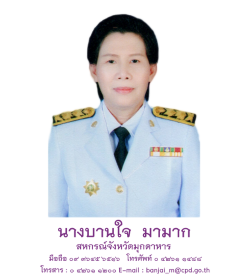×
ยินดีต้อนรับสู่ ฟอรัม Kunena!
อยากรู้จังเลยว่าคุณชอบอะไร รู้จักกับที่นี่ได้อย่างไร และสาเหตุจูงใจอะไรจึงลงทะเบียนเป็นสมาชิกกับทางเรา ช่วยแจ้งให้เราได้ทราบหน่อยได้ไหม
ยินดีต้อนรับสมาชิกใหม่ทุกท่าน และหวังว่าทางเราจะได้รับใช้คุณเยี่ยงนี้ตลอดไป
อยากรู้จังเลยว่าคุณชอบอะไร รู้จักกับที่นี่ได้อย่างไร และสาเหตุจูงใจอะไรจึงลงทะเบียนเป็นสมาชิกกับทางเรา ช่วยแจ้งให้เราได้ทราบหน่อยได้ไหม
ยินดีต้อนรับสมาชิกใหม่ทุกท่าน และหวังว่าทางเราจะได้รับใช้คุณเยี่ยงนี้ตลอดไป
промокод на заказ в мвидео
- RussellTum
- Topic Author
- Visitor
-

1 month 3 weeks ago #2660044
by RussellTum
Replied by RussellTum on topic кракен ссылка
Europe’s secret season for travel starts now
<a href=https://kra17att.cc>kra18 at
Summer might be the most popular season for tourism to Europe, but it hardly promises a calm, cool and collected experience.
Who can forget this summer’s protests against overtourism in Barcelona and Mallorca, the wildfires that raged across Greece during the country’s hottest June and July on record and selfie stoplights to help control crowds on the clogged streets of Rome and Florence?
For travelers looking to avoid all that — as well as break less of a sweat literally and financially — welcome to Europe’s secret season.
kra17att.cc
kraken shop
From roughly mid-October to mid-December, shoulder season for travel to Europe comes with fewer crowds, far more comfortable temperatures in places that skew scorching hot during the summer months and plunging prices on airfare and accommodation.
Plunging prices
“The cheapest time to fly to Europe is typically from about the middle point of October to the middle point of December,” said Hayley Berg, lead economist at travel platform Hopper. “Airfare prices during those eight or nine weeks or so will typically be about an average of 40% lower than prices in the peak of summer in June.”
Hopper’s data shows that airfare to Europe from the United States during the period between October 20 and December 8 is averaging between $560 and $630 per ticket — down 9% from this time last year and 5% compared to the same timeframe in 2019.
<a href=https://kra17att.cc>kra18 at
Summer might be the most popular season for tourism to Europe, but it hardly promises a calm, cool and collected experience.
Who can forget this summer’s protests against overtourism in Barcelona and Mallorca, the wildfires that raged across Greece during the country’s hottest June and July on record and selfie stoplights to help control crowds on the clogged streets of Rome and Florence?
For travelers looking to avoid all that — as well as break less of a sweat literally and financially — welcome to Europe’s secret season.
kra17att.cc
kraken shop
From roughly mid-October to mid-December, shoulder season for travel to Europe comes with fewer crowds, far more comfortable temperatures in places that skew scorching hot during the summer months and plunging prices on airfare and accommodation.
Plunging prices
“The cheapest time to fly to Europe is typically from about the middle point of October to the middle point of December,” said Hayley Berg, lead economist at travel platform Hopper. “Airfare prices during those eight or nine weeks or so will typically be about an average of 40% lower than prices in the peak of summer in June.”
Hopper’s data shows that airfare to Europe from the United States during the period between October 20 and December 8 is averaging between $560 and $630 per ticket — down 9% from this time last year and 5% compared to the same timeframe in 2019.
Reply to RussellTum
- PatrickLah
- Topic Author
- Visitor
-

1 month 3 weeks ago #2660187
by PatrickLah
Replied by PatrickLah on topic kra18 at
Groundbreaking telescope reveals first piece of new cosmic map
<a href=https://kra17att.cc>kraken тор браузер
Greetings, earthlings! I’m Jackie Wattles, and I’m thrilled to be a new name bringing awe to your inbox.
I’ve covered space exploration for nearly a decade at CNN, and there has never been a more exciting time to follow space and science discoveries. As researchers push forward to explore and understand the cosmos, advancements in technology are sparking rapid developments in rocketry, astronomical observatories and a multitude of scientific instruments.
kra17att.cc
kraken at
Look no further than the missions racing to unlock dark matter and the mysterious force known as dark energy, both so named precisely because science has yet to explain these phenomena.
Astronomers have never detected dark matter, but they believe it makes up about 85% of the total matter in the universe. Meanwhile, the existence of dark energy helps researchers explain why the universe is expanding — and why that expansion is speeding up.
Extraordinary new scientific instruments are churning out trailblazing data, ready to reshape how scientists view the cosmos.
A prime example is the European Space Agency’s wide-angle Euclid telescope that launched in 2023 to investigate the riddles of dark energy and dark matter.
Euclid this week delivered the first piece of a cosmic map — containing about 100 million stars and galaxies — that will take six years to create.
These stunning 3D observations may help scientists see how dark matter warps light and curves space across galaxies.
Meanwhile, on a mountaintop in northern Chile, the US National Science Foundation and Stanford University researchers are preparing to power up the world’s largest digital camera inside the Vera C. Rubin Observatory.
Unearthed
In the mountains of Uzbekistan, a research team used lasers strapped to a flying robot to uncover two cities buried and lost for centuries.
The anthropologists said they had mapped these forgotten medieval towns for the first time — located at a key crossroad of ancient silk trade routes — using a drone equipped with LiDAR, or light detection and ranging equipment.
When nature reclaims what’s left of once thriving civilizations, scientists are increasingly turning to remote sensing to peer through dense vegetation.
The images revealed two large settlements dotted with watchtowers, fortresses, complex buildings, plazas and pathways that tens of thousands of people may have called home.
<a href=https://kra17att.cc>kraken тор браузер
Greetings, earthlings! I’m Jackie Wattles, and I’m thrilled to be a new name bringing awe to your inbox.
I’ve covered space exploration for nearly a decade at CNN, and there has never been a more exciting time to follow space and science discoveries. As researchers push forward to explore and understand the cosmos, advancements in technology are sparking rapid developments in rocketry, astronomical observatories and a multitude of scientific instruments.
kra17att.cc
kraken at
Look no further than the missions racing to unlock dark matter and the mysterious force known as dark energy, both so named precisely because science has yet to explain these phenomena.
Astronomers have never detected dark matter, but they believe it makes up about 85% of the total matter in the universe. Meanwhile, the existence of dark energy helps researchers explain why the universe is expanding — and why that expansion is speeding up.
Extraordinary new scientific instruments are churning out trailblazing data, ready to reshape how scientists view the cosmos.
A prime example is the European Space Agency’s wide-angle Euclid telescope that launched in 2023 to investigate the riddles of dark energy and dark matter.
Euclid this week delivered the first piece of a cosmic map — containing about 100 million stars and galaxies — that will take six years to create.
These stunning 3D observations may help scientists see how dark matter warps light and curves space across galaxies.
Meanwhile, on a mountaintop in northern Chile, the US National Science Foundation and Stanford University researchers are preparing to power up the world’s largest digital camera inside the Vera C. Rubin Observatory.
Unearthed
In the mountains of Uzbekistan, a research team used lasers strapped to a flying robot to uncover two cities buried and lost for centuries.
The anthropologists said they had mapped these forgotten medieval towns for the first time — located at a key crossroad of ancient silk trade routes — using a drone equipped with LiDAR, or light detection and ranging equipment.
When nature reclaims what’s left of once thriving civilizations, scientists are increasingly turning to remote sensing to peer through dense vegetation.
The images revealed two large settlements dotted with watchtowers, fortresses, complex buildings, plazas and pathways that tens of thousands of people may have called home.
Reply to PatrickLah
- Raymondagela
- Topic Author
- Visitor
-

1 month 3 weeks ago #2660234
by Raymondagela
Replied by Raymondagela on topic kra16.at
Anna Moneymaker/Getty Images
<a href=https://kra20.net>kra16.cc
Trump improved on GOP margins nearly everywhere and delivered on his promise to win over more non-White voters
Live Updates Here’s where things stand in the House, as GOP hopes to complete a sweep in Washington
Still-stunned Democrats begin to squint toward their future
We asked Americans what they’d heard about Trump and Harris throughout the campaign. Here’s what they told us
Supreme Court Justice Sotomayor to stay at job as some call for her to step down
January 6 rioters and judges digest the impact of Trump’s victory
kra16.cc
kra15gl.cc
<a href=https://kra20.net>kra16.cc
Trump improved on GOP margins nearly everywhere and delivered on his promise to win over more non-White voters
Live Updates Here’s where things stand in the House, as GOP hopes to complete a sweep in Washington
Still-stunned Democrats begin to squint toward their future
We asked Americans what they’d heard about Trump and Harris throughout the campaign. Here’s what they told us
Supreme Court Justice Sotomayor to stay at job as some call for her to step down
January 6 rioters and judges digest the impact of Trump’s victory
kra16.cc
kra15gl.cc
Reply to Raymondagela
- MiguelSwige
- Topic Author
- Visitor
-

1 month 3 weeks ago #2660243
by MiguelSwige
Replied by MiguelSwige on topic kra7.gl
King Charles has led the nation in two minutes of silence in remembrance of men and women who lost their lives serving in the two world wars or other conflicts.
<a href=https://gl-kra11.cc>кракен зеркало
Tens of thousands of veterans and civilians joined the King in paying their respects to the fallen at the annual National Service of Remembrance ceremony at the Cenotaph in central London.
The King was joined by other members of the Royal Family, including the Prince and Princess of Wales, and political leaders.
Events to mark Remembrance Sunday - observed on the closest Sunday to Armistice Day - are taking place around the country.
The King laid the first wreath on behalf of the nation. Dressed in the Royal Navy uniform of the Admiral of the Fleet, he saluted after stepping back from the Cenotaph.
The King was followed by Queen Camilla’s equerry, Major Ollie Plunket, laying a wreath on her behalf as she is currently recovering from a chest infection.
Prince William, Prince Edward and Princess Anne followed, then Prime Minister Sir Keir Starmer and the country's other political leaders.
kra21.cc
kra23.net
<a href=https://gl-kra11.cc>кракен зеркало
Tens of thousands of veterans and civilians joined the King in paying their respects to the fallen at the annual National Service of Remembrance ceremony at the Cenotaph in central London.
The King was joined by other members of the Royal Family, including the Prince and Princess of Wales, and political leaders.
Events to mark Remembrance Sunday - observed on the closest Sunday to Armistice Day - are taking place around the country.
The King laid the first wreath on behalf of the nation. Dressed in the Royal Navy uniform of the Admiral of the Fleet, he saluted after stepping back from the Cenotaph.
The King was followed by Queen Camilla’s equerry, Major Ollie Plunket, laying a wreath on her behalf as she is currently recovering from a chest infection.
Prince William, Prince Edward and Princess Anne followed, then Prime Minister Sir Keir Starmer and the country's other political leaders.
kra21.cc
kra23.net
Reply to MiguelSwige
- JefferyKnirm
- Topic Author
- Visitor
-

1 month 3 weeks ago #2660325
by JefferyKnirm
Replied by JefferyKnirm on topic Кракен даркнет
Groundbreaking telescope reveals first piece of new cosmic map
<a href=https://kra17att.cc>kraken tor
Greetings, earthlings! I’m Jackie Wattles, and I’m thrilled to be a new name bringing awe to your inbox.
I’ve covered space exploration for nearly a decade at CNN, and there has never been a more exciting time to follow space and science discoveries. As researchers push forward to explore and understand the cosmos, advancements in technology are sparking rapid developments in rocketry, astronomical observatories and a multitude of scientific instruments.
kra17att.cc
Площадка кракен
Look no further than the missions racing to unlock dark matter and the mysterious force known as dark energy, both so named precisely because science has yet to explain these phenomena.
Astronomers have never detected dark matter, but they believe it makes up about 85% of the total matter in the universe. Meanwhile, the existence of dark energy helps researchers explain why the universe is expanding — and why that expansion is speeding up.
Extraordinary new scientific instruments are churning out trailblazing data, ready to reshape how scientists view the cosmos.
A prime example is the European Space Agency’s wide-angle Euclid telescope that launched in 2023 to investigate the riddles of dark energy and dark matter.
Euclid this week delivered the first piece of a cosmic map — containing about 100 million stars and galaxies — that will take six years to create.
These stunning 3D observations may help scientists see how dark matter warps light and curves space across galaxies.
Meanwhile, on a mountaintop in northern Chile, the US National Science Foundation and Stanford University researchers are preparing to power up the world’s largest digital camera inside the Vera C. Rubin Observatory.
Unearthed
In the mountains of Uzbekistan, a research team used lasers strapped to a flying robot to uncover two cities buried and lost for centuries.
The anthropologists said they had mapped these forgotten medieval towns for the first time — located at a key crossroad of ancient silk trade routes — using a drone equipped with LiDAR, or light detection and ranging equipment.
When nature reclaims what’s left of once thriving civilizations, scientists are increasingly turning to remote sensing to peer through dense vegetation.
The images revealed two large settlements dotted with watchtowers, fortresses, complex buildings, plazas and pathways that tens of thousands of people may have called home.
<a href=https://kra17att.cc>kraken tor
Greetings, earthlings! I’m Jackie Wattles, and I’m thrilled to be a new name bringing awe to your inbox.
I’ve covered space exploration for nearly a decade at CNN, and there has never been a more exciting time to follow space and science discoveries. As researchers push forward to explore and understand the cosmos, advancements in technology are sparking rapid developments in rocketry, astronomical observatories and a multitude of scientific instruments.
kra17att.cc
Площадка кракен
Look no further than the missions racing to unlock dark matter and the mysterious force known as dark energy, both so named precisely because science has yet to explain these phenomena.
Astronomers have never detected dark matter, but they believe it makes up about 85% of the total matter in the universe. Meanwhile, the existence of dark energy helps researchers explain why the universe is expanding — and why that expansion is speeding up.
Extraordinary new scientific instruments are churning out trailblazing data, ready to reshape how scientists view the cosmos.
A prime example is the European Space Agency’s wide-angle Euclid telescope that launched in 2023 to investigate the riddles of dark energy and dark matter.
Euclid this week delivered the first piece of a cosmic map — containing about 100 million stars and galaxies — that will take six years to create.
These stunning 3D observations may help scientists see how dark matter warps light and curves space across galaxies.
Meanwhile, on a mountaintop in northern Chile, the US National Science Foundation and Stanford University researchers are preparing to power up the world’s largest digital camera inside the Vera C. Rubin Observatory.
Unearthed
In the mountains of Uzbekistan, a research team used lasers strapped to a flying robot to uncover two cities buried and lost for centuries.
The anthropologists said they had mapped these forgotten medieval towns for the first time — located at a key crossroad of ancient silk trade routes — using a drone equipped with LiDAR, or light detection and ranging equipment.
When nature reclaims what’s left of once thriving civilizations, scientists are increasingly turning to remote sensing to peer through dense vegetation.
The images revealed two large settlements dotted with watchtowers, fortresses, complex buildings, plazas and pathways that tens of thousands of people may have called home.
Reply to JefferyKnirm
- RichardUnush
- Topic Author
- Visitor
-

1 month 3 weeks ago #2660361
by RichardUnush
Replied by RichardUnush on topic kraken darknet
Groundbreaking telescope reveals first piece of new cosmic map
<a href=https://kra17att.cc>kra17 at
Greetings, earthlings! I’m Jackie Wattles, and I’m thrilled to be a new name bringing awe to your inbox.
I’ve covered space exploration for nearly a decade at CNN, and there has never been a more exciting time to follow space and science discoveries. As researchers push forward to explore and understand the cosmos, advancements in technology are sparking rapid developments in rocketry, astronomical observatories and a multitude of scientific instruments.
kra17att.cc
kraken darknet onion
Look no further than the missions racing to unlock dark matter and the mysterious force known as dark energy, both so named precisely because science has yet to explain these phenomena.
Astronomers have never detected dark matter, but they believe it makes up about 85% of the total matter in the universe. Meanwhile, the existence of dark energy helps researchers explain why the universe is expanding — and why that expansion is speeding up.
Extraordinary new scientific instruments are churning out trailblazing data, ready to reshape how scientists view the cosmos.
A prime example is the European Space Agency’s wide-angle Euclid telescope that launched in 2023 to investigate the riddles of dark energy and dark matter.
Euclid this week delivered the first piece of a cosmic map — containing about 100 million stars and galaxies — that will take six years to create.
These stunning 3D observations may help scientists see how dark matter warps light and curves space across galaxies.
Meanwhile, on a mountaintop in northern Chile, the US National Science Foundation and Stanford University researchers are preparing to power up the world’s largest digital camera inside the Vera C. Rubin Observatory.
Unearthed
In the mountains of Uzbekistan, a research team used lasers strapped to a flying robot to uncover two cities buried and lost for centuries.
The anthropologists said they had mapped these forgotten medieval towns for the first time — located at a key crossroad of ancient silk trade routes — using a drone equipped with LiDAR, or light detection and ranging equipment.
When nature reclaims what’s left of once thriving civilizations, scientists are increasingly turning to remote sensing to peer through dense vegetation.
The images revealed two large settlements dotted with watchtowers, fortresses, complex buildings, plazas and pathways that tens of thousands of people may have called home.
<a href=https://kra17att.cc>kra17 at
Greetings, earthlings! I’m Jackie Wattles, and I’m thrilled to be a new name bringing awe to your inbox.
I’ve covered space exploration for nearly a decade at CNN, and there has never been a more exciting time to follow space and science discoveries. As researchers push forward to explore and understand the cosmos, advancements in technology are sparking rapid developments in rocketry, astronomical observatories and a multitude of scientific instruments.
kra17att.cc
kraken darknet onion
Look no further than the missions racing to unlock dark matter and the mysterious force known as dark energy, both so named precisely because science has yet to explain these phenomena.
Astronomers have never detected dark matter, but they believe it makes up about 85% of the total matter in the universe. Meanwhile, the existence of dark energy helps researchers explain why the universe is expanding — and why that expansion is speeding up.
Extraordinary new scientific instruments are churning out trailblazing data, ready to reshape how scientists view the cosmos.
A prime example is the European Space Agency’s wide-angle Euclid telescope that launched in 2023 to investigate the riddles of dark energy and dark matter.
Euclid this week delivered the first piece of a cosmic map — containing about 100 million stars and galaxies — that will take six years to create.
These stunning 3D observations may help scientists see how dark matter warps light and curves space across galaxies.
Meanwhile, on a mountaintop in northern Chile, the US National Science Foundation and Stanford University researchers are preparing to power up the world’s largest digital camera inside the Vera C. Rubin Observatory.
Unearthed
In the mountains of Uzbekistan, a research team used lasers strapped to a flying robot to uncover two cities buried and lost for centuries.
The anthropologists said they had mapped these forgotten medieval towns for the first time — located at a key crossroad of ancient silk trade routes — using a drone equipped with LiDAR, or light detection and ranging equipment.
When nature reclaims what’s left of once thriving civilizations, scientists are increasingly turning to remote sensing to peer through dense vegetation.
The images revealed two large settlements dotted with watchtowers, fortresses, complex buildings, plazas and pathways that tens of thousands of people may have called home.
Reply to RichardUnush
Time to create page: 4.852 seconds












